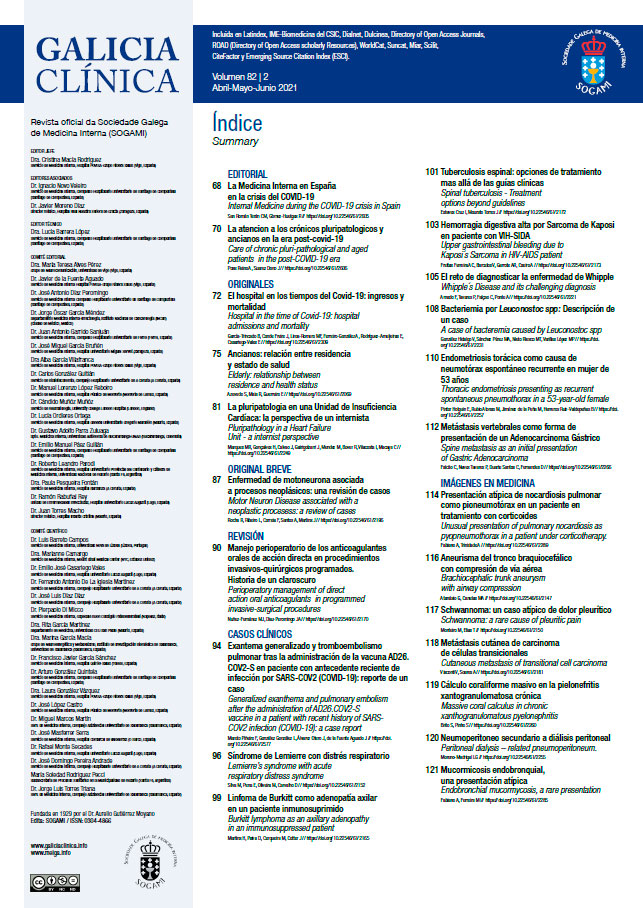Abstract
A 56-year-old woman with a history of type 2 diabetes mellitus and chronic kidney disease on continuous ambulatory peritoneal dialysis in the last 3 months. She attended a preoperative assessment consultation for elective cholecystectomy for chronic lithiasic cholecystitis. The presence of right subdiaphragmatic gas, suggestive of pneumoperitoneum (figure), not observed in previous studies was detected on chest radiography. She referred asymptomatic and no physical irritation data were found on physical examination. No evidence of peritonitis in recent peritoneal fluid cytology. Abdominal tomography with oral contrast was requested, discarding hollow viscera perforation. In the absence of other causes of pneumoperitoneum, it was attributed to peritoneal dialysis. It was treated conservatively, with abdominal air drainage through peritoneal dialysis. Pneumoperitoneum is described as a potential complication of this therapy, due to a poor performance in purging the system.1 Its incidence is 1 -10%.2 Perforated viscus, must be thoroughly ruled out.1,2 In order for a pneumoperitoneum to occur, repetitive entry of air into the abdominal cavity exceeding the reabsorptive capacity of the peritoneum would have to occur such as would happen with recurrent failure to adequately prime the dialysis tubing.2 It has been described that intraperitoneal air has been removed by placing patients in the Trendelenburg position after drainage of peritoneal dialysis.1,2Galicia Clínica by Sociedad Gallega de Medicina Interna is licensed under a Creative Commons Reconocimiento-NoComercial-SinObraDerivada 4.0 Internacional License.
Created from galiciaclinica.info.


